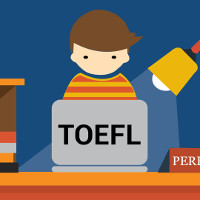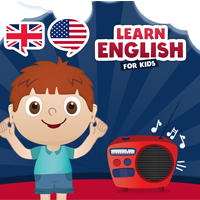TOEFL Reading comprehension lesson 5
TOEFL Reading comprehension lesson 5 là tài liệu luyện đọc hiểu, giúp các bạn ôn tập chuẩn bị cho bài thi TOEFL. Bài tập có đáp án đi kèm, các bạn có thể tra cứu kết quả một cách chủ động và linh hoạt. Mời các bạn tham khảo.
TOEFL Reading comprehension lesson 5
Đọc đoạn văn sau và trả lời các câu hỏi:
Langston Hughes was one of the greatest American writers of the twentieth century. He was born in Joplin, Missouri, and moved to Cleveland at the age of fourteen. Several years later he spent one year in Mexico before attending Columbia University in New York. For a few years after that he roamed the world as a seaman, visiting ports around the world and writing some poetry. He returned to the United States and attended Lincoln University, where he won the Witter Bynner Prize for undergraduate poetry. After graduating in 1928, he traveled to Spain and to Russia with the help of a Guggenheim fellowship.
His novels include Not Without Laughter (1930) and The Big Sea (1940). He wrote an autobiography in 1956 and also published several collections of poetry. The collections include The Weary Blues (1926), The Dream Keeper (1932), Shakespeare in Harlem (1942), Fields of Wonder (1947), One Way Ticket (1947), and Selected Poems (1959). A man of many talents, Hughes was also a lyricist, librettist, and a journalist. As an older man in the 1960s he spent much of his time collecting poems from Africa and from African-Americans to popularize black writers. Hughes is one of the most accomplished writers in American literary history, and he is seen as one of the artistic leaders of the Harlem Renaissance, the period when a neighborhood that was predominantly black produced a flood of great literature, music, and other art forms depicting daily city life for African-Americans.
1. What is the main topic of this passage?
A. the life of Langston Hughes
B. the Harlem Renaissance
C. African-American writers
D. American twentieth-century writers
2. Where was Langston Hughes born?
A. Spain
B. New York
C. Missouri
D. North Carolina
3. The word “roamed” as used in line 4 is closest in meaning to which of the following?
A. Traveled
B. Soared
C. Floated
D. Walked
4. As used in line 4, which of the following words could best replace the word “ports”?
A. Islands
B. Ships
C. Friends
D. Harbors
5. To which of the following movements might “Shakespeare in Harlem” refer to?
A. the Civil War
B. the Harlem Riots
C. the Harlem Renaissance
D. the Civil Rights Movement
6. What provided Hughes with assistance for his travel to Spain and Russia?
A. his job as a reporter
B. his career as a soldier
C. a literary fellowship
D. a college study program
7. The word “talents” in line 13 could be be replaced by which of the following?
A. Desires
B. Abilities
C. Strategies
D. Careers
8. According to the author, what did Hughes do during the later years of his life?
A. write short stories
B. popularize African-American writers
C. advocate racial equality
D. write about life in Harlem
9. Which of the following could best replace the word “accomplished” as used in line 15?
A. Successful
B. Prolific
C. Brilliant
D. Imaginative
10. The author uses the word “flood” in line 18 to refer to
A. a drought
B. an outpouring
C. a cloudburst
D. a streak
11. Which of the following can best substitute for the word “depicting” in line 19?
A. Congratulating
B. Blessing
C. Screening
D. Portraying
12. According to the passage, Langston Hughes was all of the following EXCEPT
A. a novelist
B. a poet
C. an historian
D. a journalist
Đáp án TOEFL Reading comprehension lesson 5
1. A 2. C 3. A 4. D | 5. C 6. C 7. B 8. B | 9. A 10. B 11. D 12. C |






